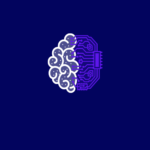Significant advances in a number of disciplines have resulted from the rise of artificial intelligence (AI), but there have also been difficulties, especially in the area of digital media. The production of deepfakes—very realistic and frequently dishonest AI-generated films and images—is one of the most alarming trends. The demand for efficient solutions for detection and prevention is growing as deepfakes get more complex. ZeroGPT is a cutting-edge AI detection tool that provides a potent defense against deepfakes. This blog examines ZeroGPT’s operation and application in countering the risks that deepfakes represent.
Understanding Deepfakes
Deepfakes are synthetic media where a person’s likeness is manipulated to create realistic but fake content. These can range from humorous face swaps to malicious attempts at disinformation. Deepfakes leverage deep learning algorithms, particularly Generative Adversarial Networks (GANs), to produce convincing imitations of real people.
The Dangers of Deepfakes
– Misinformation: Deepfakes can spread false information, potentially influencing public opinion, politics, and social stability.
– Fraud: They can be used in scams, impersonating individuals to deceive others into financial or personal harm.
– Reputation Damage: Deepfakes can tarnish the reputation of individuals by placing them in compromising situations.
– Security Threats: They pose risks to national security by potentially creating false narratives involving public figures.
Also read: The Impact of ZeroGPT on Academic Integrity
How ZeroGPT Combats Deepfakes
ZeroGPT is designed to detect AI-generated content with high accuracy. It uses advanced machine learning techniques to analyze media and identify signs of synthetic manipulation. Here’s how ZeroGPT can be a game-changer in combating deepfakes:
-
Advanced Detection Algorithms
ZeroGPT employs state-of-the-art AI detection algorithms capable of analyzing subtle inconsistencies in deepfake videos and images. These algorithms are trained on vast datasets of real and synthetic media, allowing them to distinguish between authentic and manipulated content effectively.
-
Real-Time Analysis
One of ZeroGPT’s standout features is its ability to perform real-time analysis. This means that media can be verified as soon as it is uploaded or shared. Real-time detection is crucial for platforms like social media, where deepfakes can spread rapidly.
-
Comprehensive Media Verification
ZeroGPT is not limited to video content; it can also verify images and audio. This comprehensive approach ensures that all forms of deepfake media are covered, providing a robust defense against various types of synthetic content.
Implementing ZeroGPT in Different Sectors
-
Social Media Platforms
Deepfakes are primarily disseminated via social media. ZeroGPT integration allows businesses to identify and eliminate deepfake content before it spreads on social media. This shields users from false information and preserves the platform’s integrity.
-
News Organizations
For news organizations, the credibility of their content is paramount. ZeroGPT can be used to verify the authenticity of media before publication, ensuring that only accurate and truthful content is shared with the public. This helps uphold journalistic standards and trust.
-
Government Agencies
Government agencies can use ZeroGPT to monitor and verify content related to national security. This includes identifying deepfakes in intelligence operations and ensuring the authenticity of information shared with the public during crises.
-
Corporate Communications
Companies can implement ZeroGPT to verify internal and external communications. This includes ensuring that marketing materials, press releases, and executive messages are authentic and free from manipulation, protecting the company’s reputation.
Best Practices for Using ZeroGPT
-
Integration with Existing Systems
To maximize the benefits of ZeroGPT, it should be integrated with existing content management and verification systems. This seamless integration ensures that all media can be quickly and effectively analyzed for authenticity.
-
Regular Training and Updates
AI detection algorithms must be regularly updated and trained on new datasets to stay ahead of evolving deepfake techniques. Organizations should ensure that ZeroGPT is continually updated to maintain its effectiveness.
-
User Education and Awareness
Educating users about the dangers of deepfakes and how to use ZeroGPT is essential. This includes training for employees, journalists, and public figures on recognizing deepfakes and using verification tools effectively.
-
Collaborative Efforts
Combating deepfakes requires collaboration between technology providers, governments, and organizations. By working together, these entities can develop comprehensive strategies and share knowledge to enhance the effectiveness of tools like ZeroGPT.
The Future of Deepfake Detection with ZeroGPT
The battle against deepfakes is ongoing, and as the technology behind them evolves, so too must the tools used to detect them. ZeroGPT is committed to staying at the forefront of deepfake detection, continuously improving its algorithms and expanding its capabilities.
-
Enhanced AI Detection
Future advancements in ZeroGPT will include even more sophisticated AI detection techniques, capable of identifying the most subtle forms of manipulation. This will be essential as deepfake creators develop more advanced methods.
-
Wider Accessibility
Making ZeroGPT widely accessible will be crucial for its success. This includes developing user-friendly interfaces and integrating the tool into various platforms and applications, making it easy for individuals and organizations to use.
-
Global Collaboration
Deepfake detection is a global issue, and ZeroGPT aims to collaborate with international partners to share knowledge, resources, and best practices. This global effort will enhance the tool’s effectiveness and ensure a united front against deepfakes.
Conclusion
Deepfakes pose a significant threat to the authenticity and credibility of digital media. ZeroGPT offers a powerful solution for combating these threats, providing advanced detection algorithms, real-time analysis, and comprehensive media verification. By implementing ZeroGPT across various sectors, from social media and news organizations to government agencies and corporate communications, we can protect against the dangers of deepfakes.
ZeroGPT’s commitment to continuous improvement and global collaboration positions it as a leading tool in the fight against deepfakes. By staying informed and adopting best practices for using ZeroGPT, we can ensure that our digital media remains authentic, credible, and trustworthy.
